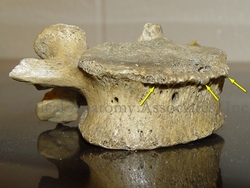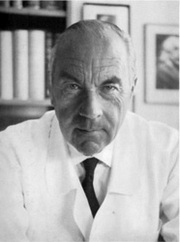|
The suffix [-oma] means "tumor", "mass", or "growth". It should be noted that the word [tumor] is originally Latin, and means "swelling" or "bulging". Sometimes the plural form [-omata] can be used.
It is a general misconception that the suffix [-oma] or the term [tumor] are synonymous with "cancer". This is not so. [Tumor] only means a mass and the type of mass, benign or malignant is not implied in the term. A cancerous mass will be denoted by the addition of the root term [-carcin-] meaning "cancer" therefore the combined root and suffix will be [-carcinoma]. There are other root-suffix combinations that also mean "cancerous".
The suffix [-oma] can be found in many medical words, such as:
• Hematoma: from the Greek root [-hem-] meaning "blood". A mass of blood
• Myoma: from the root [-my-] meaning "muscle". A mass, growth, or tumor of muscle.
• Fibroma: from the root [-fibr-] meaning "fiber". A mass of fibers.
• Fibromyoma: the combining form of "muscle" is [myo-], therefore "a mass of fibers and muscle" (Pl. fibromyomata)
• Adenoma: from the Greek [aden-] meaning "gland". A mass that has a glandular look to it or a mass in a gland
Sources:
1. "The Language of Medicine" John H. Dirckx Pub: Harper & Row 1976
2. "Medical Meanings" Haubrich, William S. Am Coll Phys Philadelphia 1997
3. "The origin of Medical Terms" Skinner, AH, 1970
|







